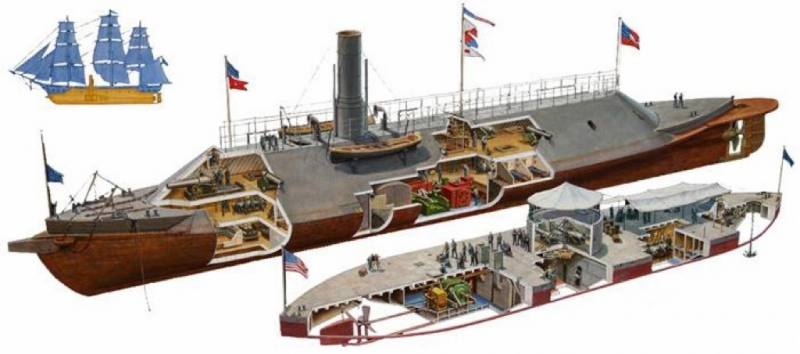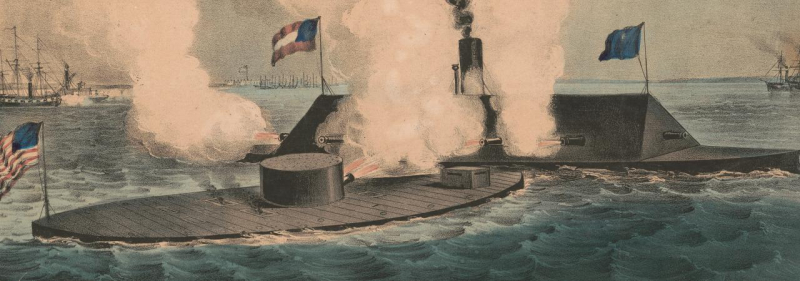The Confederacy had great difficulty in sourcing the iron plating needed for the Virginia
In the months following Virginia's secession in April 1861, many of the U.S. Union forces were fleeing when the U.S. Navy was swiftly sunk or destroyed at the Gosport Naval Yard in Portsmouth. The top works of the USS Merrimack had been burned to the ground and scuttled. Merrimack was lifted out of the Elizabeth River's muck, placed on an unharmed graving pier, and outfitted with a lot of armor by the Confederates. The ship was given a new name: CSS Virginia.
In October of 1861, it was determined that Virginia (the converted former USS Merrimack) would need two layers of two-inch iron armor plate covering its entire casement. There just wasn't enough iron available to meet the requirement, which required more than 800 tons. Confederate efforts to make up for this acute shortage included tearing up hundreds of miles of railroad track, melting down outdated smoothbore artillery, and collecting old scrap iron. The Union had more time to build their defenses against Virginia's escalating threat thanks to the difficulties in collecting and shaping these iron plates.












